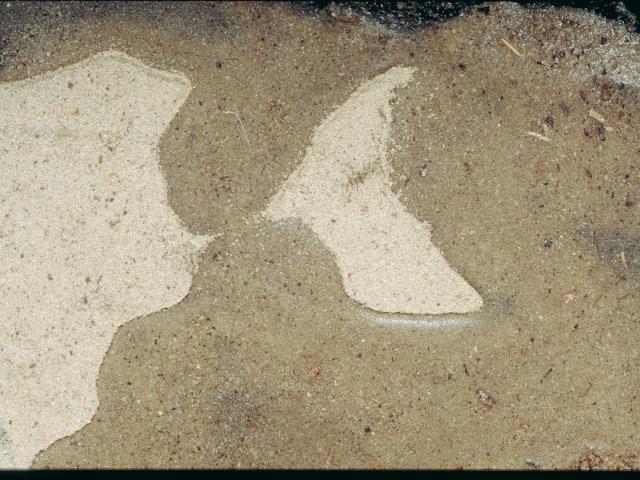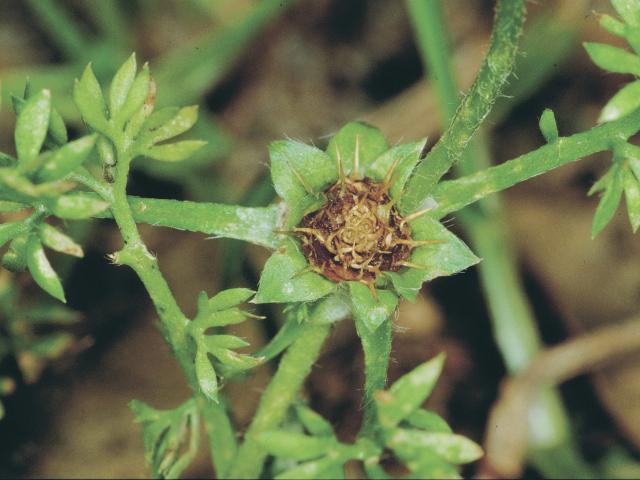Grass varieties
Warm season varieties are the most commonly used grasses in Western Australian home gardens. They include types of couches, buffalo grass, paspalum species, zoysia and kikuyu. These grasses grow best in temperatures between 27-30°C, are heat and drought tolerant and use minimal water. Many warm season varieties are less adapted to shade and may turn brown in winter.
Irrigation, thatch and dry patch management
All home lawns in Perth and many country areas are subject to water restrictions with those on scheme water allowed to irrigate on nominated watering days up to twice a week and those on bore water up to three times a week before 9am or after 6pm. Permanent winter sprinkler bans apply to all scheme and bore water users in Perth, Mandurah and some parts of the south west, from 1 June to 31 August each year.
The length of watering depends on the reticulation system but is about ten minutes per station for pop up sprinklers. For recommended water use times for other sprinklers consult the Water Corporation website.
A symptom of long term water repellence, and the most common lawn problem in Perth, is 'dry patch', which is often confused with a fungal or insect problem. Dry patch management is described in more detail at Lawn problems.
Water repellence may be noticed in Perth’s soils as the season progresses. This becomes apparent through water ponding and water infiltrating into only the top layer of the soil profile. Water penetration can be greatly improved by applying soil wetting agents. Make sure you wet the soil before and after you apply the wetting agent.
Water repellence can also be caused by thatch — a layer of vegetative and dead material which accumulates as the lawn grows. Do not allow the thatch layer to become more than 13mm thick.
Commercial operators use vertimowers to remove thatch layers in lawns, preferably in spring. Vertimowers have blades set vertically to cut into the grass and soil and rejuvenate the lawn.
Fertilising
Only apply fertiliser when symptoms of nutrient deficiency occur like yellowing. On Perth sandy soils, an application of 25g/m2 of a complete fertiliser, containing 10-12% nitrogen (N), 1% or less phosphorus (P) and 6-10% potassium (K) is recommended in autumn and spring, when grass grows rapidly. Most commercial fertilisers contain all the essential elements. Lawns need less fertiliser if grass clippings are recycled during mowing by removing the catcher. Buffalo grass requires less fertiliser than couch. As pollution of waterways due to phosphorus leaching from gardens is an issue in Perth and in other parts of Western Australia, the use of a complete fertiliser without phosphorus is another environmentally responsible option for home gardeners. Because phosphorus leaches slowly, it may not need to be applied as frequently as N or K. Try alternating fertiliser with mixtures which do not contain P.
Mowing
Different cutting heights are recommended for different grass varieties. A lawn will become thin, weak and prone to disease attack and weed invasion if it is consistently cut too short. As a rule, you should never cut your grass lower than 2.5cm. Adjust your cutting according to the seasons: cut shorter during active growth and longer at the end of the season. Longer grass will use less water as more of the soil surface is shaded.
To maintain a lawn of reasonable quality, mow weekly in summer and reduce the frequency to monthly (or less) in winter.
In general, make sure that no more than 40% of the leaf area is removed in one cut. Avoid cutting the lawn when it is wet.
Most people remove the clippings from the lawn. However, this depletes it of valuable nutrients. If you decide to leave the clippings on the lawn, make sure that they are spread evenly and thinly. Thick layers of clippings produce heat and/or may harbour diseases, which could harm the lawn beneath. Leaving the clippings on the lawn may also lead to a faster build-up of the thatch layer.
Mulching mowers are now commercially available. They shred the grass to a fine layer which breaks down faster. This is a more effective way of recycling the valuable nutrients.
Insect pest problems
Armyworms
Armyworm is one of the biggest insect pest problems in Western Australian garden lawns. They can move quickly across a lawn and completely destroy it in the summer months. An average lawn can be eaten in two nights.
Adults are a dull brown or greyish, night-active moth up to 3.8cm long. Larvae (caterpillars) are up to 5cm long at maturity; they often curl up and lie still when disturbed. Armyworm larvae chew and cut leaves around the crown and they attack all turf grass species. Damage begins in small, irregular spots and spreads to patches extending some metres in width. Armyworms prefer moist areas. They are active from early spring through autumn. To control armyworms, reduce thatch and eliminate soggy areas. Larvae have some natural enemies, such as parasitic wasps and flies. If there are more than five larvae per square metre present, you may need to treat. An application of Bacillus thuringiensis (Bt) may be effective against young caterpillars. For chemical control, apply a registered lawn insecticide at night.
Cutworms
Cutworm adults are drab, heavy-bodied, night-flying moths. The fully grown caterpillars are fat and fleshy and about 35mm long. They curl up head-to-tail when disturbed. The caterpillars attack grass at ground level causing the blades to sever. They are nocturnal and shelter in the soil. For chemical control, apply registered lawn insecticide in the late afternoon.
African black beetle
The African black beetle is often falsely held responsible when dry patch is the real problem. The grubs of African black beetles feed from September to May and cut the grass from its roots. Lawn damaged this way can sometimes be rolled back like a carpet. African black beetle is considered a problem when 25 grubs per square metre are present. The adult beetles are less damaging. For more details refer to Lawn problems.
Couch mites
Couch mites are a common insect pest of home lawns. They are usually found within the forks of grass blades or shoots. Affected plants produce several shoots from the infested growing point.
Couch mites favour dry sites. To avoid spreading this pest, mow the affected areas last and clean the lawnmower afterwards. For chemical control, use a registered lawn insecticide.
Billbugs
Billbugs are an occasional pest on kikuyu grass from spring to autumn. Billbug larvae tunnel into the inside of turf grass stems and crowns.
As the larvae grow, they leave the stolons and feed below the thatch on rhizomes and roots. The affected area appears brown, thin, and dead in small, irregular spots. Affected grass can be easily plucked out by hand. For chemical control, apply a registered lawn insecticide.
Ants
Ants do not directly affect grasses. They build mounds and excavate underground tunnels, causing the turf to dry out and die. Ants are active in the warmer season in all grasses. Ants should be identified before control measures are untaken to ensure the correct insecticide is used. Refer to Coastal brown ants - big headed ants to gain a further understanding of ant behaviour and control. Ant samples can also be sent to the Pest and Disease Information Service (PaDIS) for identification and control recommendations. Ant samples should be sprayed first with fly spray and then stuck to clear sticky tape. Consult the Sending specimens for identification page for further advice.
Earthworms
Earthworms are more of a nuisance than a pest. Worm casts are thrown up on lawn surfaces, forming small mounds, particularly when soil is waterlogged after heavy rain. Earthworms are not damaging the lawn and are beneficial organisms with casts that provide fertiliser. They can be active all year on most grasses but if they are unwanted, aerate the soil with a garden fork.
Lawn disease problems
Most lawn diseases are encouraged by long periods of leaf wetness. These conditions occur after watering in the evening in summer or from periods of morning dew in winter. Greenkeepers have found that leaf wetness can be effectively broken down using a 'dummy rake', which is a 70-100cm long wooden board, which is dragged across the lawn. This method appears to have reduced the incidence of lawn diseases on golf courses. Morning dew can effectively be broken down with a reticulation system.
Dollar spot
Dollar spot is the most common lawn disease in home lawns, especially Queensland blue and couch. Symptoms begin with the appearance of small straw-coloured circular spots about the size of a 20 cent piece, which eventually grow. Dollar spot is encouraged by long periods of leaf wetness, and any method to break this wetness will prevent against this disease. Dollar spot is also encouraged in low nitrogen situations, so keep the lawn well fertilised. For more details refer to Lawn problems.
Spring dead spot
Spring dead spot occurs in cool moist conditions, mainly among couches and couch hybrids. The symptoms of spring dead spot are stunted, bleached patches of dying turf, up to one metre in diameter. These patches tend to reappear and expand in the same spot for three to four years. To prevent spring dead spot keep the lawn well watered and fertilised and do not cut it too low. Use varieties that are resistant to spring dead spot to over-seed an affected area. For chemical control, use a registered lawn fungicide.
Fairy ring
Fairy ring affects most grass varieties. Symptoms of this disease vary depending on the species of fungus. A dark green band of turf may develop in a circle or semi-circle, or a ring of brown, dying grass may occur. Mushrooms may or may not be present. White, fungal mycelia may be observed under the thatch layer. To prevent fairy ring, apply adequate nitrogen to mask the symptoms. Improve water penetration, and aerate. De-thatch the lawn if the thatch layer is more than 1.2cm thick. Fungicides are available but they have not been observed to reliably control fairy ring.
Weed problems
Bindii
Bindii, onehunga or jo-jo is a common weed with prickly seeds. Plants first emerge with the early winter rains and seeds form between spring and summer.
They are hard to remove manually because the roots need to be removed totally to avoid regrowth. Use a registered selective herbicide in June and again in August to kill the weed.
Grasses
Summer and winter grasses should be controlled with registered pre-emergence herbicides applied on established lawns before the weeds germinate. Apply in May for winter weeds, and August/September for summer weeds.
Other broad leaved weeds
Other broad leaved weeds such as capeweed, carrot weed, dandelion and oxalis can be controlled with a selective herbicide available from hardware stores. Some are general lawn-feeding and weeding chemicals and can be applied with the garden hose. These are generally not as effective as targeted weed killers. These lawn 'feed and weed' type products can be damaging to buffalo grass and can kill ornamental plants. If ornamentals are sprayed unintentionally, wash them down thoroughly. Always follow label instructions carefully.






